REPÜLŐMÚZEUM SZOLNOK
Daimler-Benz DB-605
Fordítás/Translation: Jószai Zoltán
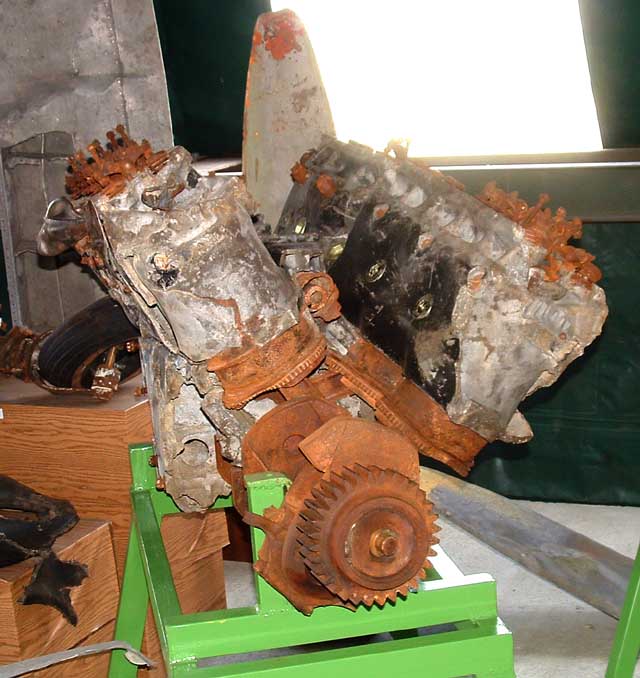 |
A lógóhengeres
V-motort a tárolón "hátonrepülő" helyzetben helyezték el,
így jobban lehet látni a részleteket.
The
inverted V engine is displayed upside, so the details can be
seen better. |
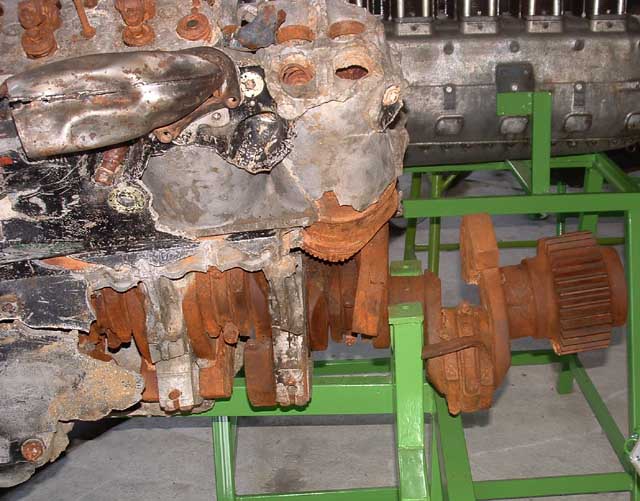 |
A becsapódás
hatására a főtengely meghajlott, a légcsavar
az áttétellel együtt eltűnt, csakúgy mint az elülső hengerpár
és a vezérműtengelyek.
During
impact the crankshaft have bent, the propeller and it's
gears disappeared, just like the first pair of cylinders and
the camshafts. |
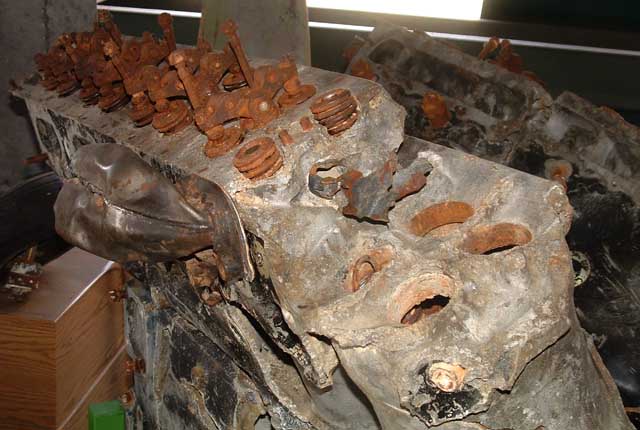 |
Hengerenként
négy szelep, benzin-befecskendezés:
hatvan-egynéhány év múltán a korszerű autómotorok jellemzői.
Hengersoronként egy vezérmű-tengely volt, az azonos hengerhez tartozó szívó- és kipufogószelepek himbáit egyazon bütyök mozgatta. Four
valves per cylinder, fuel injection: After more than six
decades these are the features of modern car engines. |
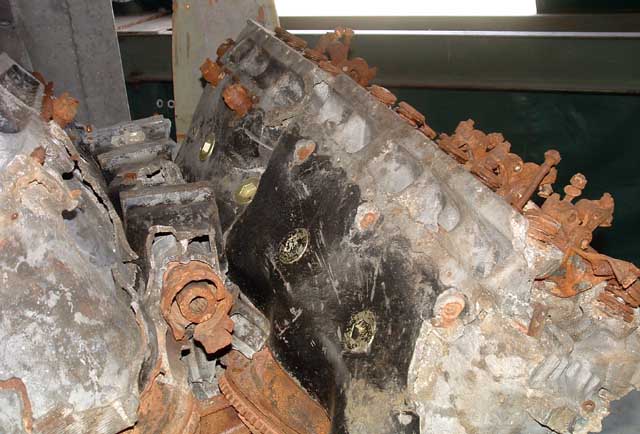 |
A hengerek
között a légcsavar-tengelyen át tüzelő gépágyú maradéka. A
csőben jól látszik a huzagolás.
The canon,
shooting through the propeller shaft, sits between the
cylinder lines. The rifling of the barrel is clearly visible. |
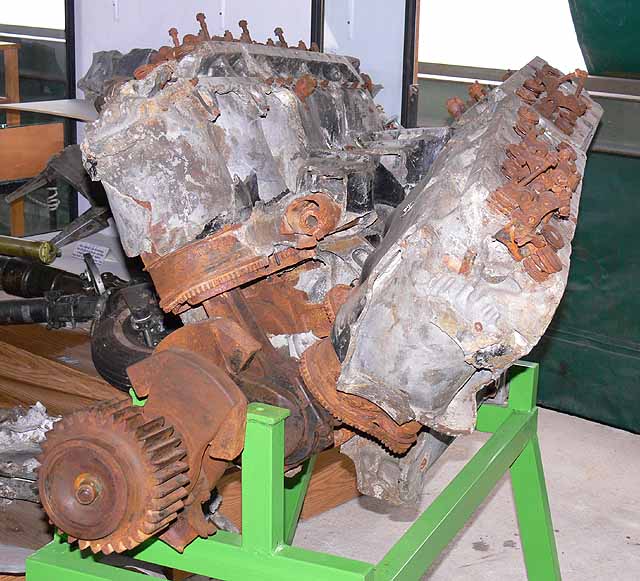 |
A becsapódás
átformálta a hengersorokat. Erről a motorról annyit tudunk, hogy egy magyar Me-109 G6-ban szolgált, amíg 1944.június 16.-án Kereki mellett le nem zuhant, Pászthy főhadnagy pilótával. A gép oldalszáma vagy gyári azonosítója nem ismert.
The impact deformed the line of cylinders.
All we know
about this engine is that it served in a Hungarian Me-109
G6, until it crashed on the 16th of June, 1944. near Kereki,
with it's pilot 1st Lieutenant Pászthy. The tail number and
serial number of the aircraft are unknown. |
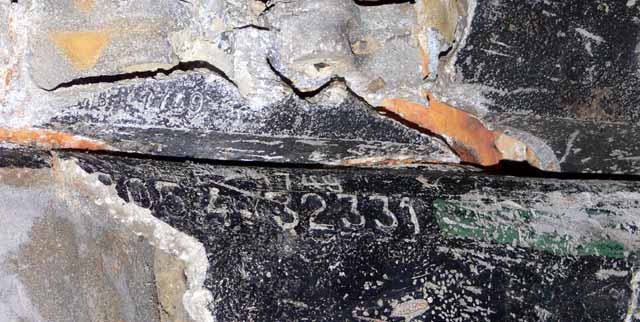 |
A motor
jelzéséből ennyi maradt. This is what is left of the engine number. |